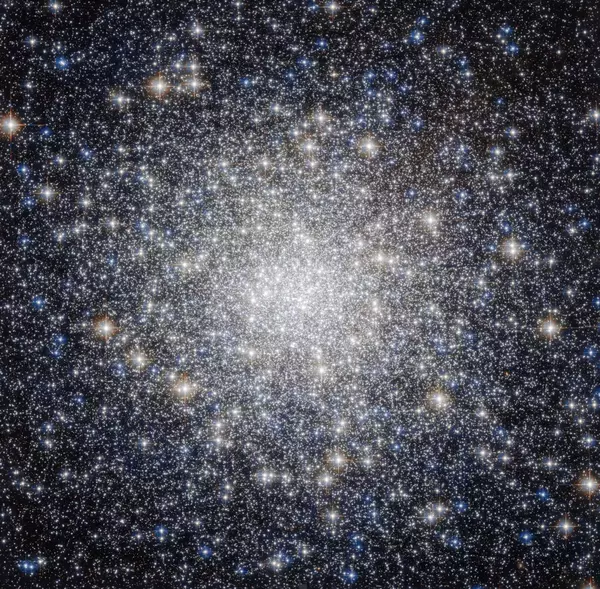
Globular clusters, some of the oldest objects discovered in our galaxy, are more than just simple concentrations of stars around the same age. They may also be involved in the creation of about half of the elements heavier than iron, including elements that our bodies require for life, according to an astrophysicist at the University of Notre Dame and collaborators.
Evan Kirby, associate professor of physics and astronomy, verified a dispersion of elements — meaning the abundance of some key elements in one star is different from the abundance in another star — in the globular cluster Messier 92 (M92). This confirms that the cluster may be one of the few areas of the galaxy where a rare process called the rapid neutron capture process, or “r-process,” has formed heavy metals.
His paper was published recently in the Astrophysical Journal. The discovery opens up the range of places where scientists can look for where important elements were created.
“For me, I want to know where every single item on the periodic table comes from. I want to know what makes the ingredients for life,” Kirby said about his impetus for working through the data about various stars in M92, a process that was tedious.
The r-process is a set of nuclear reactions that is responsible for the creation of approximately half of the atomic nuclei heavier than iron. The r-process usually synthesizes neutron-rich stable isotopes of each heavy element.
Kirby’s research began as a Covid-era project in 2020. He reviewed spectra of 35 stars in M92, which is about 28,000 light years away. Preliminary research about 12 years ago had shown there could be dispersion of heavy elements in M92, but Kirby was unsure how important that could be. After he began looking through the data for the stars, he noticed a pattern typical of globular clusters: areas of increasing sodium and decreasing magnesium, which are made separately from the r-process.
The timeline works like this: The first stars to form in the cluster have little sodium and copious magnesium. As stars fused lighter elements into heavier elements, the amount of sodium in later-forming stars increases, and the amount of magnesium decreases, Kirby described. Physicists refer to low-sodium (or high-magnesium) stars as “first generation,” and the other stars as “second generation.” In M92, Kirby noticed that stars in the first generation showed variability in their concentrations of europium, which is the hallmark signature of the r-process. On the other hand, stars in the second generation had identical concentrations of europium.
Because the stars in any globular cluster are within a few tens of millions of years apart in age, the differences in the amounts of the elements showed that there were different “doses” of elements at different times while the first generation of stars were forming, like a pot of soup that hasn’t yet been stirred. Second-generation stars that formed later (after the cluster was “stirred”) do not show a dispersion of r-process elements.
“Until this paper, there hadn’t been a real convincing piece of evidence to point to, to say there was a sequence of time that has to do with the r-process in a globular cluster,” he said.

The r-process has been explicitly confirmed only in neutron star mergers, but Kirby’s work expands the possibility of the r-process occurring in supernovae, some of which exploded in globular clusters like M92. At Notre Dame, other researchers, including Professor Rebecca Surman, are investigating whether the formation of heavy metals could also have emerged from magnetorotational supernovae — stars that are spinning rapidly before they explode.
Discovering the source of heavy metals is not only important to understand how life formed, but also has implications for understanding fundamental physics, cosmological models, and the formation of exoplanets.
“Finding out that the r-process originated from multiple events is a step forward for future research,” Kirby said.
In addition to Kirby, other collaborators include Alexander P. Ji, of the University of Chicago, and Mikhail Kovalev, of Yunnan Observatories.
The research was funded by the National Science Foundation.